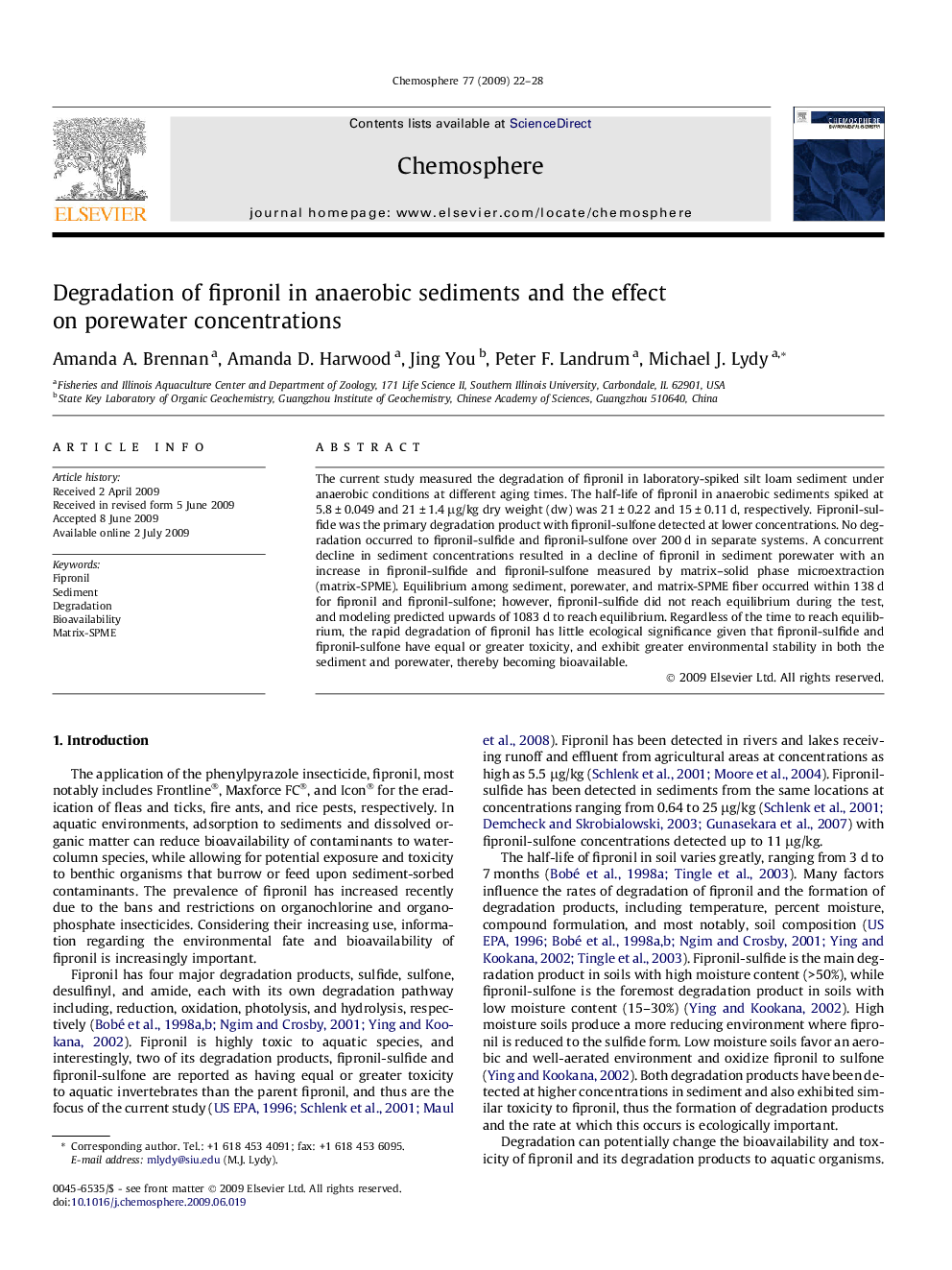| Article ID | Journal | Published Year | Pages | File Type |
|---|---|---|---|---|
| 4412495 | Chemosphere | 2009 | 7 Pages |
The current study measured the degradation of fipronil in laboratory-spiked silt loam sediment under anaerobic conditions at different aging times. The half-life of fipronil in anaerobic sediments spiked at 5.8 ± 0.049 and 21 ± 1.4 μg/kg dry weight (dw) was 21 ± 0.22 and 15 ± 0.11 d, respectively. Fipronil-sulfide was the primary degradation product with fipronil-sulfone detected at lower concentrations. No degradation occurred to fipronil-sulfide and fipronil-sulfone over 200 d in separate systems. A concurrent decline in sediment concentrations resulted in a decline of fipronil in sediment porewater with an increase in fipronil-sulfide and fipronil-sulfone measured by matrix–solid phase microextraction (matrix-SPME). Equilibrium among sediment, porewater, and matrix-SPME fiber occurred within 138 d for fipronil and fipronil-sulfone; however, fipronil-sulfide did not reach equilibrium during the test, and modeling predicted upwards of 1083 d to reach equilibrium. Regardless of the time to reach equilibrium, the rapid degradation of fipronil has little ecological significance given that fipronil-sulfide and fipronil-sulfone have equal or greater toxicity, and exhibit greater environmental stability in both the sediment and porewater, thereby becoming bioavailable.
